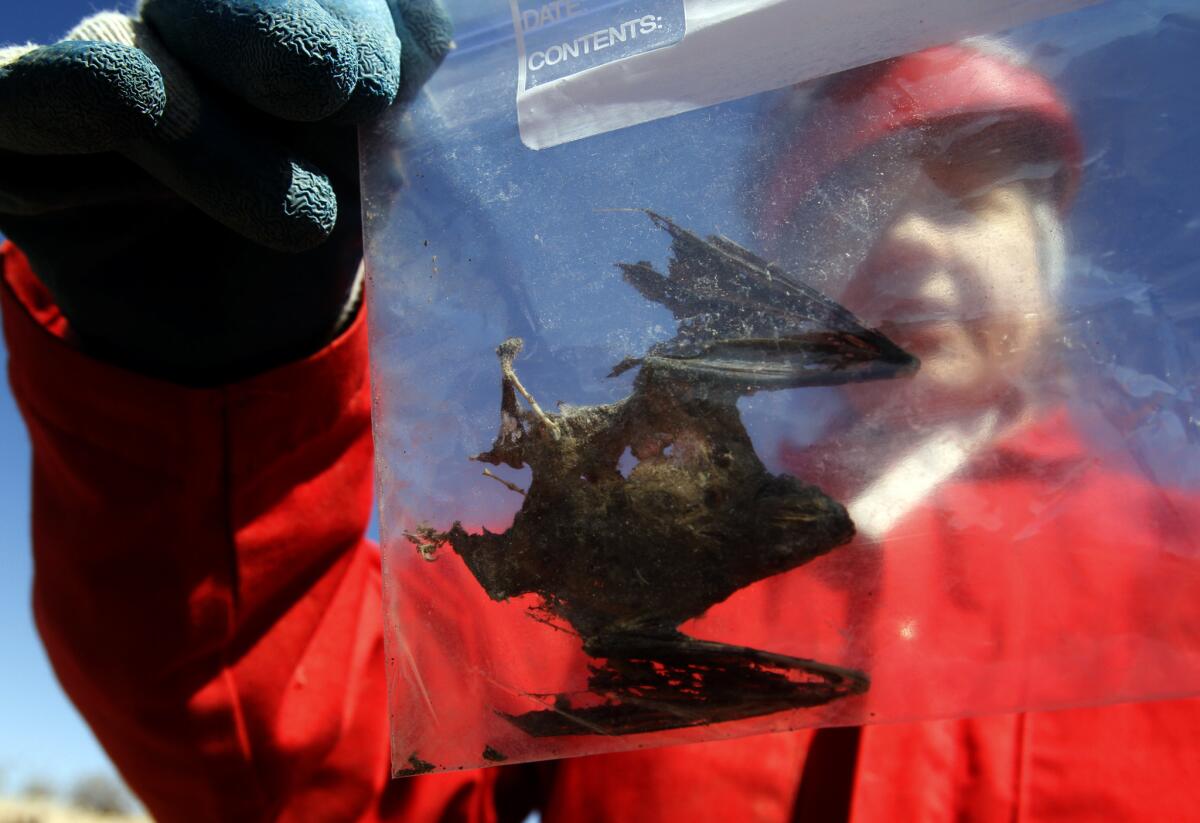Fungus that has killed roughly 7 million bats has now reached the West Coast

Bureau Of Land Management biologist Marikay Ramsey holds a bat carcass she discovered in New Mexico while searching for signs of the deadly white–nose syndrome in 2011. Federal biologists said March 31 they have detected the lethal fungus on the West Coast.
- Share via
Federal biologists on Thursday confirmed the presence of a lethal fungus known as white-nose syndrome in Washington, the first occurrence in western North America of the disease that has killed roughly 7 million bats.
The discovery of white-nose syndrome in a little brown bat in North Bend, Wash., about 30 miles east of Seattle, is a setback for cooperative conservation measures, such as restricting human access to bat roosting sites, to slow the spread of the epidemic that was first documented in 2007 in New York.
Since then, the disease that gets its name from the powdery, white substance that appears around muzzles, ears and wings of affected bats has swept across 28 states and five Canadian provinces.
“We are extremely concerned about the confirmation of white-nose syndrome in Washington state — about 1,300 miles from the previous westernmost detection of the fungus that causes the disease,” U.S. Fish and Wildlife Service Director Dan Ashe said.
“Bats are a crucial part of our ecology and provide essential pest control for our farmers, foresters and city residents,” he said, “so it is important we stay focused on stopping the spread of this fungus.”
Bats feast on such night-flying insects as mosquitoes, which transmit West Nile virus, and agricultural pests damaging to cotton and corn crops. They also pollinate plants, including the saguaro cactus.
The current value of pest control provided by bats each year is at least $3.7 billion nationwide.
White-nose syndrome has killed mostly little brown bats, which have lost more than 20% of their population in the northeastern U.S. over the past nine years. Mortality rates among colonies of some species in eastern states, such as northern long-eared bats, have reached 99%.
There was no reason to believe that the disease wouldn’t eventually make its way to the West Coast. However, biologists did not expect it to spread across geographic barriers such as the Rocky Mountains so quickly.
“We had hoped that the disease would stay out of the West long enough to get promising potential treatments up and running,” Mollie Matteson, a bat specialist at the Center for Biological Diversity, said. “Now, it looks like it’s here to stay.”
Follow me on Twitter @LouisSahagun and “like” Los Angeles Times Science & Health on Facebook.







